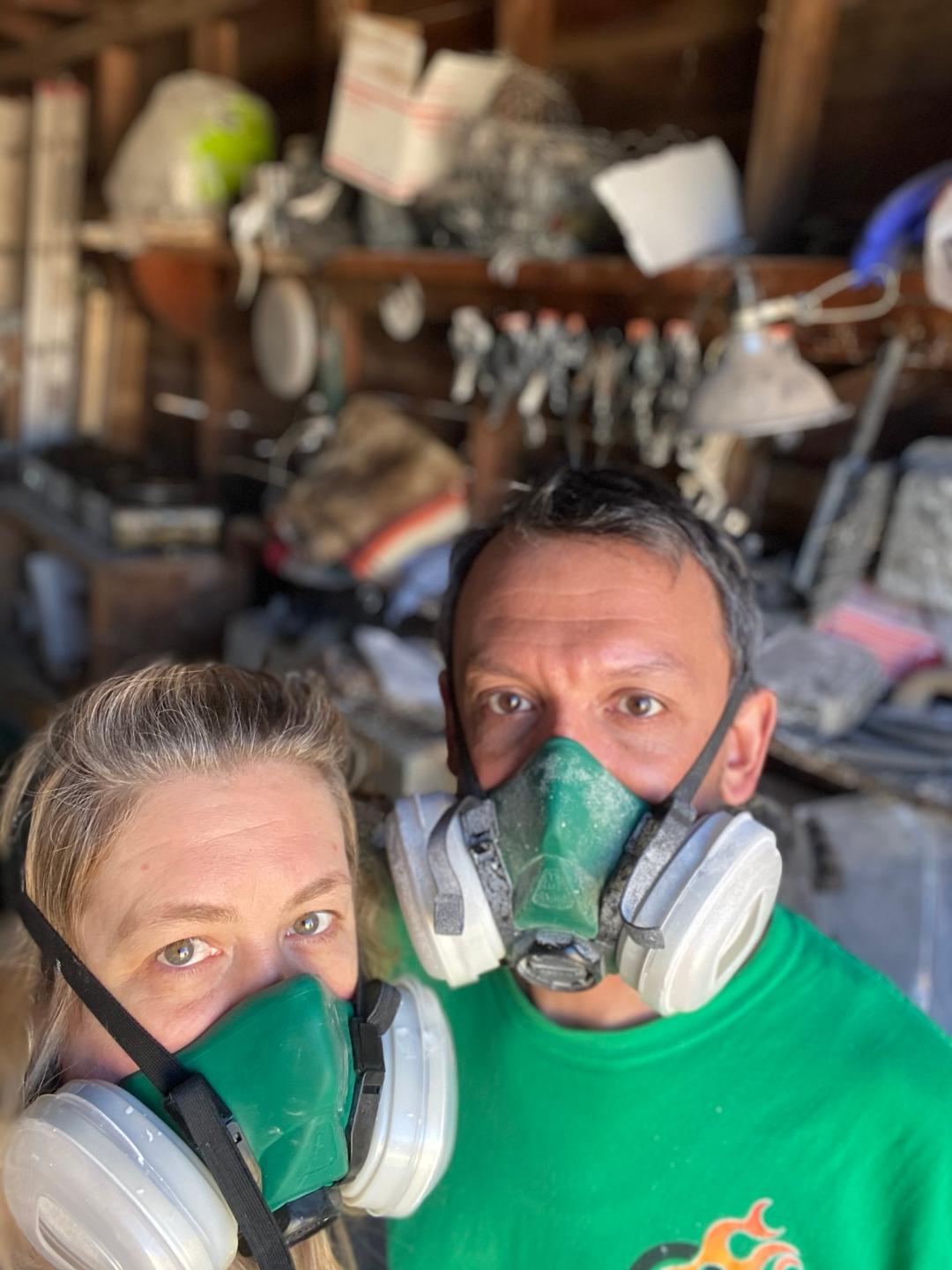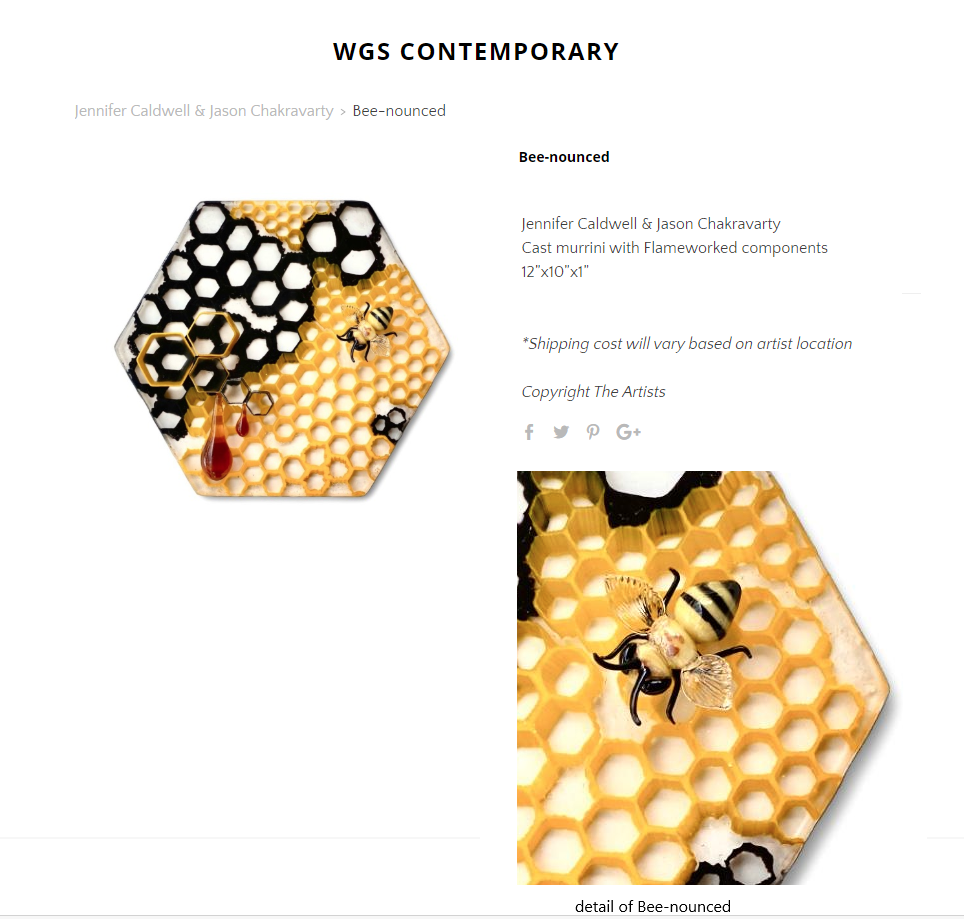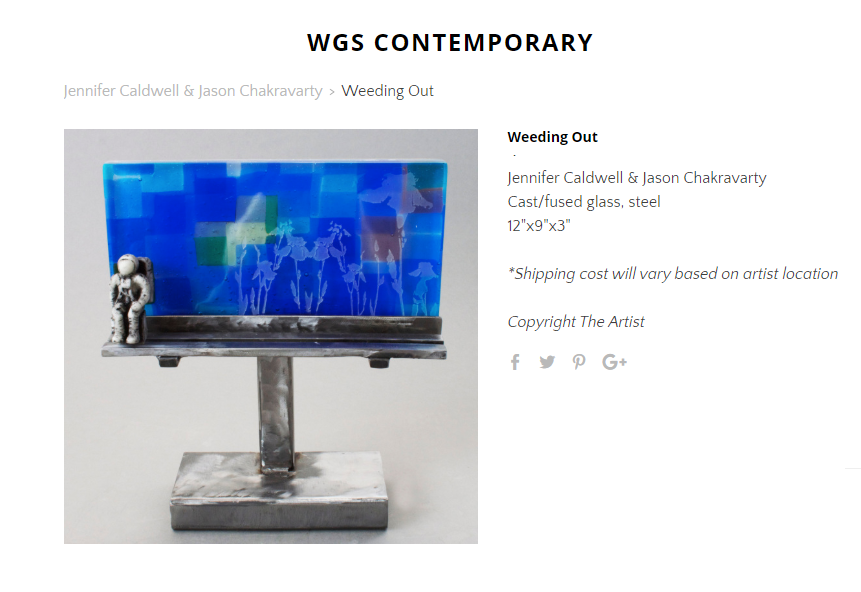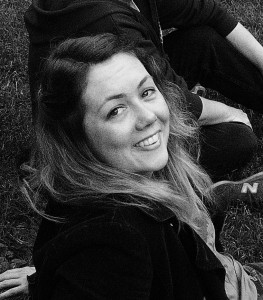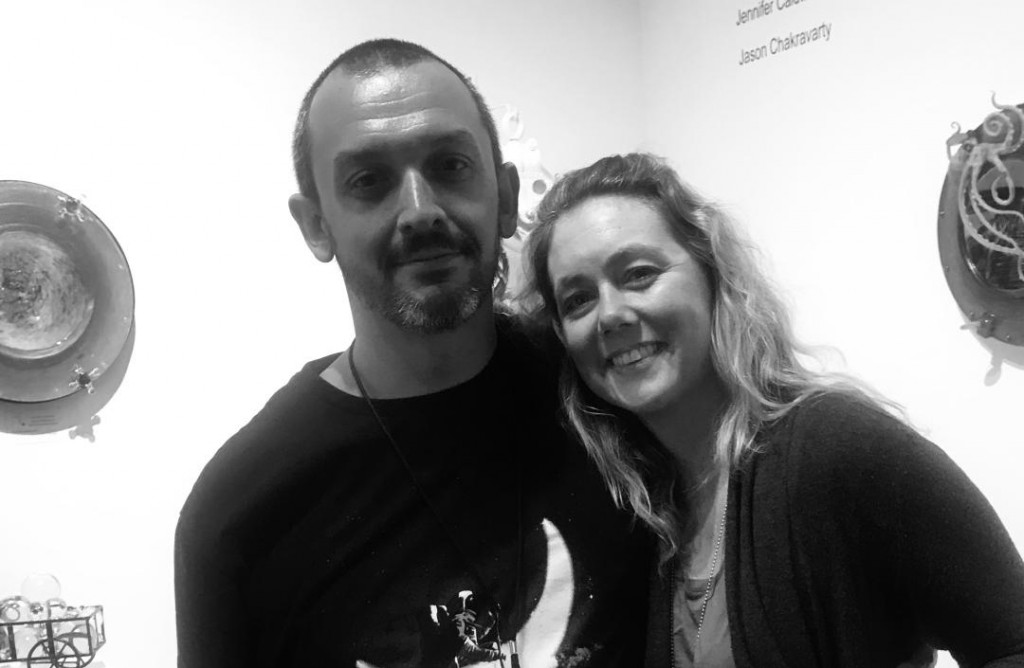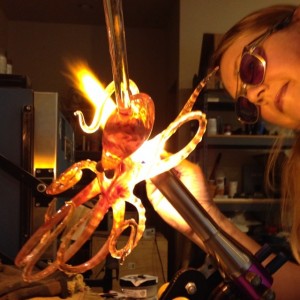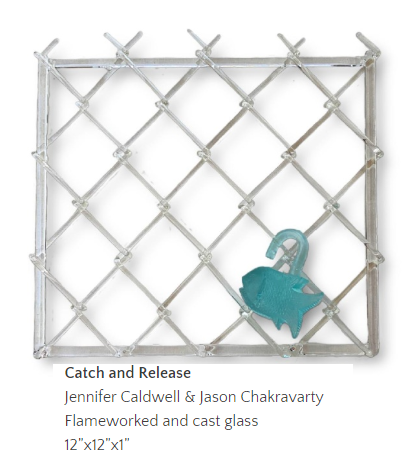CLICK IT! Featured Artist: Jason Chakravarty
Jason Chakravarty is a mixed media artist based in Arizona. He worked for four years in a commercial neon sign shop before earning his MFA from California State University-Fullerton. He teaches neon and kiln casting workshops at universities and glass centers nationwide, and exhibits his work nationally.
Jason Chakravarty, together with Jennifer Caldwell have made many collaborative pieces, maintaining a critical, conceptual, and technical dialogue thru their work. Jennifer best known for her flame worked glass compositions and Jason’s technical focus is cast glass objects which often include parts or techniques from the hot shop. He uses familiar photorealistic imagery that ranges from sea to space. The narrative is the starting point and is a response to daily life and cultural observations.
Their work has been exhibited in museums including Corning Museum of Glass and Tacoma Museum of Glass, at SOFA Chicago.
Washington Glass School blog catches up with Jason as his work is part of the WGS Contemporary online exhibit “CLICK-IT!” and the associated show “Artists for Racial Justice“
Washington Glass School (WGS): Describe your artwork method/process.
Jason Chakravarty: Our process begins with a need to illuminate an idea. Ideas come from our surroundings, travels (or lack of in 2020), experiences, written stories, or even just captured moments. Glass presents the only medium with endless possibilities. We cast, blow, sculpt, paint, slump, fuse, carve, light it up and cut it. Glass can be made thick, thin, transparent, and opaque. To explain a single process would ignore the way we work.
WGS: Describe your work in the show and highlight aspects that the viewers should understand about the work.
Jason Chakravarty: For Click It, we were lucky to include works that span over the past decade. The most recent being ‘Beenounced‘. This piece highlights the delicacy of Jennifer’s flame worked bee and honey living amongst a random and repeating hexagon honeycomb pattern. Each leg and wing is sculpted by hand, while a more machine-like process for the hexagon can be compared to a sushi roll. Long pulls of clear glass coated with yellow or black cut up, organized on end and cast to make a larger hexagon home.
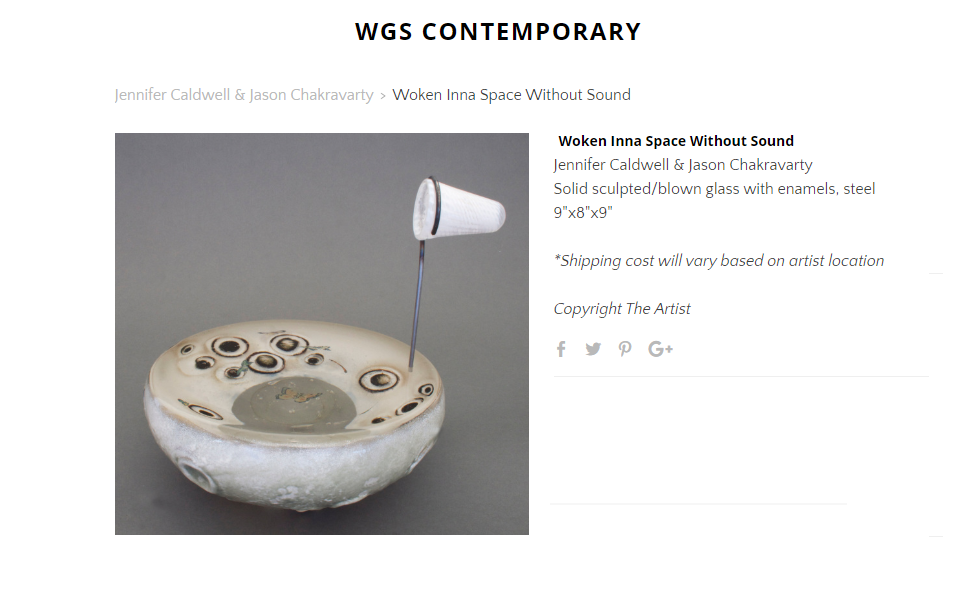
Jason Chakravarty and Jennifer Caldwell, “Woken Inna Space Without Sound”; sculpted/blown glass/mixed media
On the other end of the timeline spectrum, ‘Woken Inna Space Without Sound‘ was entirely made using the hot shop. A small paperweight was created and cooled, butterfly and bee decals were applied to the surface. The paperweight was then heated, more clear glass was added and the glass cooled again. Add additional decals and repeat. Each layer requires a couple days. Once all the layers were built the glass was reheated again, shaped and sculpted into a half moon with craters. Layers of transparent and opaque gray, white and opal color were added to the surface and then cooled. The butterfly net was hand blown separately.
Discussing one last piece. “Catch and Release“. The lock is cast glass and was purchased in Tel Aviv on a trip to teach in Jerusalem. At the time it felt like an ancient relic that we had found in an old mud hut and bought from a man that was nearing the end of a long and nonmonetary rich life. The fence referenced a fence that ran along the walkway to a bridge in Seattle that we would use when boarding/unboarding the ferry. The fence itself is created by hand using a torch and then assembled cold and held tight in a frame like a puzzle.
WGS: How have you handled the Covid lockdown?
Jason Chakravarty: It feels like we are working on the same path as a year ago. The demand for our work has shifted but not slowed down. While we are busy, the silver lining has been that all the anxiety has subsided. Deadlines are on ‘island time’ more like a suggestion vs an absolute. While too much to list has changed we are still consistently working. Every day is still a great day to add something better to the world.
WGS: What artwork/event has moved you and got you thinking about your own work?
Jason Chakravarty: Typically travel and life experience write the story for our work and fill our sketch books. It feels like we are now able to resolve some of the ideas that have been sitting or on hold. So I would say the ‘lack of event’ has us thinking more about how we work and the actual work and less focused on the excitement that comes with new ideas.
WGS: if you were not an artist – what would you be?
Jason Chakravarty: Fred Flintstone.
WGS: Do you do a lot of planning in your work – or is there an element of chance while working?
Jason Chakravarty: We start with a plan and embrace all the changes along the way. Our work is very process orientated. Many steps using many techniques. Each would have to be perfect to reach our original plan. Nothing is ever perfect. Even our view of the narrative shifts with time, day, and week.
WGS: What is your rule of thumb in determining when a work is finished?
Jason Chakravarty: Each piece we make starts with a narrative. Our goal within a narrative is to raise questions vs provide answers. A piece is resolved when the question is asked.
Click HERE to jump to Jason Charavarty and Jennifer Caldwell’s work in CLICK-IT!
And see their work as part of “Artists For Racial Justice” – click HERE.
Read about Jennifer Caldwell – the other half of JC2 -click HERE.
